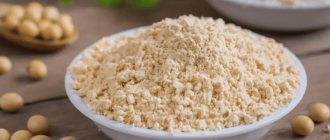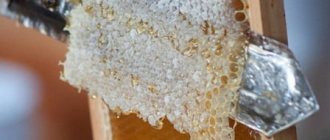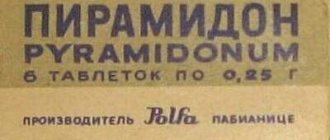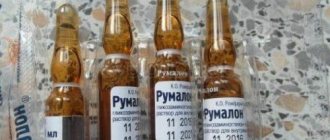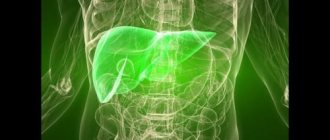With age, human articular and cartilaginous tissues lose their former elasticity, lose their functionality and are destroyed. Such changes can be delayed with the help of a number of drugs. Glucosamine chondroitin is a remedy that helps maintain the functionality of cartilage and joints, relieve symptoms of developing diseases of the musculoskeletal system and improve the quality of life of older people.
What are glucosamine and chondroitin?
Let's figure out what monosaccharides such as chondroitin and glucosamine are. There is such a thing as chondroitin sulfate. This substance is an essential component of cartilage tissue, which it produces independently. The compound is part of the synovial fluid that fills the joint capsule. These facts indicate that the full functioning of the joints depends on the presence of chondroitin.
Glucosamine acts as a building base for chondroitin and joint fluid. Its deficiency provokes a deficiency of chondroitin sulfate in cartilage tissues. The consequence of this may be the appearance of pain and crunching in the joints.
What happens to the body?
Many sports cannot do without microtraumas of tendons, joints and ligaments. Monotonous force or speed loads often cause joint damage or aggravate the pathological process. Especially at risk are those who engage in football, weightlifting, boxing, tennis, running, contact sports, ski jumping and other similar activities. Systematic loads with a sharp increase in working weight, incorrect execution technique, lack of rest between workouts - all this threatens to increase pressure on the joints.
For example, when lifting a barbell, the elbow joints suffer, as a result of squats with heavy weights, the knee joints, and when exercising on weight machines, the vertebrae suffer.
Why do joints stop functioning normally?
The cartilage tissue, which softens the friction of the articular surfaces against each other, wears out and wears out, and less and less joint fluid is produced. The joints dry out and become inflamed, they no longer play the role of a shock absorber during mobility - this is where destructive changes begin, which over time develop into osteoarthritis or other diseases. Later this can lead to ossification and complete disability. Enriching sports nutrition with glucosamine and chondroitin can prevent joint degradation.
Symptoms of joint damage:
- Pain. It may go away after rest and appear again.
- Edema.
- Limitation of mobility.
- Crunching or clicking noises while driving.
- When you press on a joint, pain occurs.
Unfortunately, all of the above affects both professional athletes and amateurs, or those who simply want to lose weight by working out in the gym. To prevent joint diseases, it is important to warm up before training, allocate enough time for recovery after physical activity, and also use dietary supplements - glucosamine and chondroitin
. And the main thing is to follow the execution technique and not rush.
What is the difference between glucosamine and chondroitin?
One of the questions that people face before using drugs is what is the difference between glucosamine and chondroitin? These substances have the same structure. It is important to know that glucosamine is an essential component of chondroitin, which complements it and enhances its properties. The combination of these substances makes it possible to improve their absorption, provide effective protection and active restoration of cartilage. Most chondoprotectors are drugs consisting only of these components. There are also products in which chondroitin and glucosamine complement the composition.
Properties, benefits and role for the human body
Speaking about why glucosamine chondroitin is taken, it is worth turning to the research of scientists. With long-term therapy with drugs that include this compound, pain relief in gonarthrosis in elderly patients is noted. Their quality of life improves as their joints become more functional. The need for non-steroidal anti-inflammatory drugs in this case is reduced (). The properties of glucosamine chondroitin allow the drugs they contain to perform the following functions:
- ensuring the regeneration of failed and damaged tissues;
- support of the process of cellular nutrition;
- prevention of the formation of age spots;
- fight against inflammatory processes in the gastrointestinal tract;
- preservation of tissue structure at the molecular level;
- preventing the appearance of vascular plaques.
Observations by scientists have led to the conclusion that glucosamine chondroitin is effective as a remedy against osteoarthritis. Its mechanism of action is based on triggering the active production of proteoglycans that have a healthy structure. The benefit of glucosamine chondroitin is that it prevents the destruction of cartilage tissue by inhibiting the activity of matrix metalloproteinase. This compound also helps prevent the spread of inflammatory processes ().
Who should take glucosamine, chondroitin, and who should avoid it?
Articles
A new-fashioned complex, which many already call a “panacea for joints.” Is it really? What is Glucosamine, chondroitin and how will it really help, who is it suitable for and what unpleasant “surprises” to beware of? More on all this below!
It should be noted right away that glucosamine alone for joints will not bring such benefits and will not give the same effect as in combination with chondroitin. These components, having similar biological properties, work better “in pairs”.
What are they good for and why are they useful in combination?
Chondroitin is a substance of the glycosaminoglycan class, which is usually extracted from shark cartilage. It is a key component and main structural element of joints, bones, ligaments, and connective tissue. It is also synthesized in the human body and is also found in the structure of the skin and joints, intra-articular fluid, and corneas.
The main function of chondroitin in the body is structural and in addition:
- it stimulates collagen synthesis;
- minimizes the destructive effect of enzymes on connective tissue;
- participates in the transfer of amino acids, lipids, water in the body;
- maintains the desired composition of intra-articular fluid.
In turn, glucosamine is a monosaccharide; the main source for obtaining it in nature is the shells of crustaceans. Glucosamine is also produced in the human body; it serves as the basis for the production of chondroitin sulfate and hyaluronic acid. Besides:
- stimulates the creation of cartilage components;
- relieves inflammation because it deactivates the substances that cause it;
- minimizes the destruction of cartilage by inhibiting the synthesis of enzymes;
- strong antioxidant;
- retains calcium in bones and joints.
In general, glucosamine and chondroitin fully exhibit their beneficial properties only together, interacting and reinforcing each other. Therefore, these substances are taken in combination and used for the prevention, treatment, and rehabilitation of joint diseases. In addition, the healing effect extends to the structure of the skin and the renewal of cartilage tissue.
Have questions about medications? Call and our consultants will answer! tel. (free call) WhatsApp
What exactly does chondroitin and glucosamine complex fight against?
- Resists the development of osteoarthritis. Moreover, it relieves symptoms, eliminates pain, and resists relapses of this destructive disease.
- Reduces mechanical damage to joints and maintains their mobility. Therefore, it is indicated for athletes, active people, travelers, and extreme sports enthusiasts. They benefit from the properties of both substances: chondroitin, glucosamine. The use of such a complex slows down destructive processes in joints and tissues, which in active people are often susceptible to injury and shock.
- Fights inflammation in the body and joints.
- Has a beneficial effect on the skin. Namely, it moisturizes, reduces the number of fine wrinkles, reduces pigmentation, and heals skin damage. According to some studies, chondroitin, glucosamine complex reduces the likelihood of developing skin cancer.
What is the harm of Glucosamine, Chondroitin?
Since these substances are synthesized in small quantities in the body of every person, their usefulness is beyond doubt. BUT! The drug "Glucosamine, chondroitin" uses substances obtained from crustacean shells and shark cartilage, which can cause allergies. There may be cases of individual intolerance to these substances by the body, the occurrence of skin allergies, swelling, and digestive disorders, which disappear over time.
Another caveat is that the complex should not be given to children; it should be taken with caution and under the supervision of a doctor during pregnancy and breastfeeding. It is necessary to consult a doctor if you decide to take chondroitin, glucosamine complex for thrombophlebitis, bleeding tendency. It is important!
And finally, you should not exceed the recommended dose of the drug! Increasing the level of these substances in the body will not give a strong effect, but it may cause unexpected side effects.
You can buy Glucosamine and Chondroitin using the link.
Indications for use and instructions for use
According to the instructions for use, glucosamine chondroitin is prescribed in case of diagnosis of osteoarthritis, tendinitis, osteoarthritis and discosis. It is recommended to use drugs with this compound for people prone to injuries, such as dislocations and fractures. Glucosamine chondroitin should be used by people who engage in weightlifting, powerlifting or bodybuilding. Their body is subject to great physical stress, after which it needs help in recovery.
Popular release forms
Glucosamine chondroitin is available in the form of external and internal use. These can be creams, ointments, capsules, tablets and powders. Products for external use do not always give the expected results and do not act as quickly as drugs that need to be taken. Tablets may be slightly less effective than capsules because some of the active ingredient dissolves on the way to the intestines, causing it to lose its benefit. In addition, the tablet form of the drug can cause intestinal irritation. Capsules are more effective and safe. They do not contain additional components that provoke adverse reactions from the gastrointestinal tract, and deliver the active substance intact to the stomach, through the walls of which it is completely absorbed into the bloodstream. Powders are more convenient to use if it is difficult to swallow tablets or capsules.
How to drink glucosamine chondroitin: norm per day, dosage
Glucosamine chondroitin is a drug with a cumulative effect, which is why the duration of its use can be up to 12 months, depending on the clinical picture. Athletes are recommended to drink 1500 mg of the drug in 2 or 3 doses. The maximum daily dose of glucosamine and chondroitin for humans is 2000 mg. The drug is started to be taken in a small amount equal to 400 mg, increasing the dosage according to the dosage regimen. It is drunk during or after meals, since the effect of the active substance slows down on an empty stomach.
Buy Glucosamine-chondroitin complex (GCC) Ultra capsules No. 90 in pharmacies
Glucosamine chondroitin complex Ultra Buy Glucosamine chondroitin complex Ultra in pharmacies MANUFACTURERS Pharmakor production (Russia)
GROUP of dietary supplements that support the functions of the musculoskeletal system
INTERNATIONAL NON-PROPENTED NAME no
Compound:
glucosamine sulfate chondroitin sulfate methylsulfonylmethane (MSM) boswellia extract
Action:
“GKH-Ultra” is a chondroprotective complex containing components that regulate metabolism in cartilage tissue and have an anti-inflammatory effect.
Recommended as an additional source of glucosamine sulfate and chondroitin sulfate. Methylsulfonylmethane (MSM) is an organic sulfur-containing compound, tasteless and odorless, which is a naturally occurring source of sulfur in a bioavailable form. MSM is the best source of active organic sulfur and significantly surpasses all other sulfur compounds in its positive properties. In the body, sulfur is necessary for the formation of muscles, ligaments, cartilage, connective tissue, nails, hair and skin. Sulfur is a necessary element for the synthesis of proteins involved in the construction of joints and ligaments. As people age, the concentration of sulfur in the body decreases, especially as a result of diet and metabolic disorders. Since sulfur plays an important role in human life, it must be present in the diet. MSM, as a source of sulfur in a bioavailable form, is used for problems with joints, as well as for unsatisfactory condition of the skin, hair and nails.
Glucosamine is involved in the biosynthesis of hyaluronic acid and proteoglycans necessary for the formation of articular cartilage and collagen synthesis, and promotes normal calcium deposition in bone tissue.
Chondroitin is a high molecular weight polysaccharide that is found in significant quantities in connective tissue, especially cartilage. Due to its viscosity and chemical structure, chondroitin prevents compression of connective tissue and plays the role of a kind of lubricant of articular surfaces.
Boswellia extract contains boswellic acids, which have a significant anti-inflammatory effect, help reduce pain, and improve the mobility of joints and the spine.
Recommendations for use:
adults: 1 capsule 3 times a day with meals. Duration of treatment: 1 month. If necessary, the reception can be repeated.
Contraindications:
individual intolerance to product components, pregnancy and breastfeeding. Before use, you should consult your doctor.
Release form:
60 or 90 capsules in a polymer jar.
Storage conditions:
store in a dry place, protected from light, out of reach of children at a temperature not exceeding +25°C.
Best before date:
2 years. Not a medicine. For whom is the GHC-Ultra complex in capsules recommended?
For adults over 18 years of age who:
Mainly lead a sedentary and sedentary lifestyle Have problems with the musculoskeletal system Experience physical stress on ligaments and joints Play various sports
Contraindications and side effects
Do not take the drug if you are hypersensitive, or if you are pregnant or breastfeeding.
Contraindications to the use of glucosamine chondroitin are also:
- minor age;
- blood clotting disorder;
- diagnosing diabetes mellitus;
- presence of asthma or hypotension;
- disruption of vascular function, including thrombus formation.
When talking about whether glucosamine chondroitin is effective, it is worth taking into account the cumulative effect of the drugs. In order for the therapy to bring results, you need to take the drug for at least 6 months. Thorough research helped determine how safe long-term use of the drugs is. It is noted that effective relief of pain and restoration of joint functionality is observed both while taking the drugs without breaks, and when they are used in courses of 3 months with breaks of the same duration. Side effects of glucosamine chondroitin have been observed in isolated cases. These include abdominal pain after discontinuation of use and a papular rash during use (). In some cases, drugs can cause nausea, vomiting and diarrhea.
Glucosamine-Chondroitin plus dietary supplement tablets No. 75
The Solgar brand is “Dietary supplements No. 1” according to the results of the “Number One” award 2021!
Name
Glucosamine + Chondroitin.
Release forms
Pills.
INN
Chondroitin sulfate + glucosamine.
FTG
Tissue regeneration stimulator.
Description
Film-coated tablets are white or white with a yellowish tint, interspersed, oval, with a biconvex surface.
Compound
One tablet contains active ingredients: glucosamine hydrochloride – 500 mg, chondroitin sulfate (in the form of sodium chondroitin sulfate) – 500 mg; excipients: calcium hydrogen phosphate dihydrate, microcrystalline cellulose, croscarmellose sodium, stearic acid, magnesium stearate, opadry (including polyvinyl alcohol, partially hydrolyzed; titanium dioxide E 171; macrogol 3350; talc).
Pharmacotherapeutic group
Other nonsteroidal anti-inflammatory and antirheumatic drugs. ATX code: M01AX.
Pharmacological properties
Pharmacodynamics
Glucosamine Mechanism of Action Glucosamine hydrochloride is a salt of the aminomonosaccharide glucosamine, which is an endogenous component and preferred substrate for the synthesis of glycosaminoglycans and proteoglycans in articular cartilage and synovial fluid. Glucosamine hydrochloride inhibits the activity of interleukin-1 beta and other inflammatory mediators. Clinical efficacy and tolerability The safety and effectiveness of glucosamine hydrochloride have been confirmed in clinical trials with treatment durations of up to three years. Short- and medium-term clinical studies have shown that the effectiveness of glucosamine hydrochloride in relation to the symptoms of osteoarthritis is observed after 2-3 weeks of its use. However, unlike nonsteroidal anti-inflammatory drugs (NSAIDs), glucosamine hydrochloride has a long-lasting effect, lasting from six months to three years. Clinical studies with daily administration of glucosamine hydrochloride for up to three years have shown gradual improvement in disease symptoms and slower structural changes in the joint, as demonstrated by plain radiography. Glucosamine hydrochloride has demonstrated good tolerability during short- and long-term courses of treatment. Evidence of the effectiveness of the drug was demonstrated when it was used for three months, with a residual effect for two months after its discontinuation. The safety and effectiveness of the drug have also been confirmed in clinical trials for up to three years. Continuous treatment for more than three years cannot be recommended, since there are no safety data when taking glucosamine for more than three years. Chondroitin sulfate Chondroitin sulfate is a high molecular weight mucopolysaccharide. It is the main component of proteaglycans, which together with collagen fibers make up the cartilage matrix.
Pharmacokinetics
Glucosamine Absorption Following oral administration of 14C-labeled glucosamine, it is rapidly and almost completely absorbed, and approximately 90% of the radiolabel is detected in the systemic circulation. The absolute bioavailability of glucosamine in humans after oral administration was 44%, taking into account the first pass. After daily oral administration of 1500 mg glucosamine hydrochloride to healthy volunteers under fasting conditions, maximum steady-state plasma concentrations (Cmax, SS) averaged 3 hours (Tmax) of about 1602 ± 426 ng/ml. At steady state, AUC was 14564±4138 ng∙h/ml. It is unknown whether food intake has a significant effect on oral bioavailability. The pharmacokinetics of glucosamine are linear in the dose range of 750-1500 mg with deviation from linearity at a dose of 3000 mg due to lower bioavailability. There are no gender differences in the absorption and bioavailability of glucosamine. The pharmacokinetics of glucosamine were similar in healthy volunteers and patients with knee osteoarthritis. Distribution Following oral absorption, glucosamine is distributed into various vascular compartments, including synovial fluid, with an apparent volume of distribution 37 times greater than total fluid volume in humans. Glucosamine does not bind to plasma proteins. Therefore, it is extremely unlikely that glucosamine is capable of drug interactions when taken together with other drugs that are highly bound to plasma proteins. Metabolism The metabolic profile of glucosamine has not been studied, since, being an endogenous substance, it is used as a “building material” for the biosynthesis of articular components of cartilage. Glucosamine is primarily metabolized by conversion to hexosamine, independent of the cytochrome system. It acts neither as an inhibitor nor as an inducer of human CYP450 isoenzymes, including CYP 3A4, 1A2, 2E1, 2C9 and 2D6.00. There is no clinically significant interaction of glucosamine with other drugs that could be realized by inhibition and/or induction of human CYP450 isoforms. Excretion In humans, the half-life of glucosamine from plasma is 15 hours. After oral administration of 14C-labeled glucosamine, excretion in urine was 10±9%, in feces - 11.3±0.1% of the administered dose. The average excretion of unchanged glucosamine after oral administration in humans is approximately 1% of the administered dose, suggesting that the kidney and liver do not play a significant role in the elimination of glucosamine, its metabolites and/or its degradation products. Pharmacokinetics in various categories of patients In patients with renal and hepatic insufficiency, studies of the pharmacokinetics of glucosamine in patients with renal or hepatic insufficiency have not been conducted. These studies were considered inappropriate due to the insignificant contribution of the liver and kidneys to the metabolism, degradation and excretion of glucosamine. Therefore, given the favorable safety profile and good tolerability of glucosamine, dosage adjustment of the drug is not required in patients with renal or hepatic impairment.
Children and teenagers
The pharmacokinetics of glucosamine have not been studied in children and adolescents. Elderly patients Pharmacokinetic studies have not been conducted in elderly patients, however, clinical trials of the efficacy and safety of glucosamine included mainly elderly patients. It has been shown that there is no need for dose adjustment in this category of patients. Chondrotin sulfate Pharmacokinetics have not been studied.
Indications for use
Relief of symptoms (from mild to moderate pain), with a gradual development of the effect, with adequately diagnosed osteoarthritis of the knee, hip joints and osteochondrosis of the spine.
Directions for use and doses
Adults, including elderly patients The recommended dose is 1 tablet 2-3 times a day (1000-1200 mg chondroitin sulfate and 1500 mg glucosamine per day). The recommended duration of treatment is at least 3-6 months.
Children and teenagers
The drug is not recommended for use in children and adolescents under 18 years of age due to the lack of data on safety and effectiveness. Patients with renal and/or hepatic insufficiency There is no data on the need for dose adjustment.
Mode of application
The tablets can be taken before, during or after meals. It is recommended that patients who do not tolerate medications on an empty stomach take this medication after meals. The tablets should be swallowed whole with sufficient liquid. If desired, the tablet can be broken or pre-grown to make it easier to swallow.
Side effects
The frequency of adverse reactions listed below was determined using the following notation: very common (≥ 1/10), common (≥ 1/100 to
Reporting suspected adverse reactions
Medical workers are recommended to send information about any suspected adverse reactions and ineffectiveness of the drug to the following address: Republican Unitary Enterprise "Center for Expertise in Testing in Healthcare", Tovarishchesky Lane, 2a, 220037, Republic of Belarus, e-mail: [email protected]
Contraindications
Hypersensitivity to the main and auxiliary components of the drug. The drug should not be prescribed to patients with shellfish allergies, because The active ingredient (glucosamine) is obtained from mollusks and crustaceans. Childhood. Pregnancy and lactation period.
Precautionary measures
Glucosamine Before using the drug, you should consult your doctor to rule out the presence of joint diseases for which other treatment methods are provided. Cases of exacerbation of symptoms of bronchial asthma after starting the use of glucosamine have been described. Patients suffering from bronchial asthma should be informed about the possible worsening of symptoms of the disease. This medicinal product contains 56 mg to 111 mg sodium per daily dose, which should be taken into account by patients on a sodium-restricted diet. Patients with impaired glucose tolerance should use caution when taking glucosamine. For patients with diabetes mellitus, it is recommended to monitor glycemic levels and determine insulin requirements before and periodically during treatment. No specific studies have been conducted in patients with renal or hepatic impairment. The toxicological and pharmacokinetic profiles of glucosamine do not suggest any restrictions for these patients. However, the use of glucosamine in patients with severe renal failure must be under medical supervision. Chondroitin sulfate Very rare (
Interaction with other drugs other forms of interaction
Glucosamine No special studies have been conducted on the interaction of glucosamine with other drugs. There are reports of an enhanced effect of coumarin anticoagulants, so more careful monitoring of coagulation parameters is necessary in patients concomitantly taking coumarin anticoagulants (for example, warfarin or acenocoumarol). Oral administration of glucosamine sulfate may increase the absorption of tetracyclines from the gastrointestinal tract, but the clinical significance of this interaction is small. It is acceptable to take steroidal or non-steroidal anti-inflammatory drugs simultaneously with glucosamine. Chondroitin sulfate Interactions with other drugs have not been described.
Use during pregnancy and breastfeeding
Due to the lack of sufficient clinical data on the use of glucosamine in pregnant women or excretion in breast milk, the use of the drug during pregnancy and breastfeeding is not recommended.
Impact on the ability to drive vehicles and operate machinery
No special studies have been conducted on the effect of the drug on the ability to drive a car and operate machinery. However, if you experience headaches, drowsiness, fatigue, dizziness or blurred vision while taking glucosamine, driving or operating machinery is not recommended.
Overdose
To date, no cases of intentional or accidental overdose have been known. In case of overdose, the drug should be stopped, treatment is symptomatic, aimed at restoring water and electrolyte balance.
Package
5 or 10 tablets in blister packs made of polyvinyl chloride film and aluminum foil. 12 blister packs of 5 tablets each (No. 5 × 12) or 6 blister packs of 10 tablets each (No. 10 × 6) together with an insert leaflet are placed in a cardboard pack.
Storage conditions
In a place protected from moisture, at a temperature not exceeding 30 °C. Keep out of the reach of children.
Best before date
2 years. Do not use after expiration date.
Conditions for dispensing from pharmacies
Over the counter.
Buy Glucosamine-Chondroitin plus, dietary supplement tablets No. 75 in the pharmacy
Price for Glucosamine-Chondroitin plus, dietary supplement tablets No. 75
Instructions for use for Glucosamine-Chondroitin plus, dietary supplement tablets No. 75
